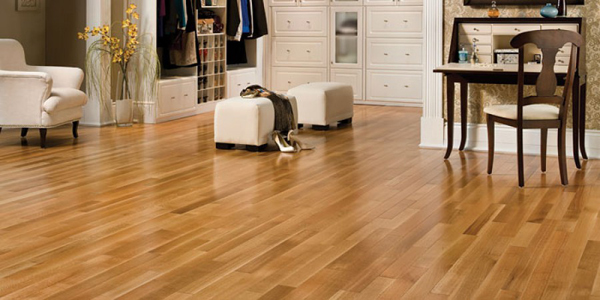
Top Flooring Trends for 2015
December 29, 2014
A guide to flooring – room transitions /contrasting
April 17, 2015As you may know, your Ottawa hardwood flooring is always moving. In a country like our every wood floor endures some expansion and contraction because of the seasons and the temperature changes. Wood flooring is a natural product that responds to humidity variations by expanding and contracting even though the wood has been dried. When homes are heated, humidity levels plummet, boards shrink and spaces appear between the boards. In dry months, cracks can easily develop.
During winter time when homes are heated and the air is dry, wood flooring gives up some of its moisture and contracts as a result. Because of this, thin gaps can appear between planks. This is normal, and when spring comes and humidity levels rise again, most of the gaps will disappear. If you want to avoid these separations, you can try to control the humidity by installing a humidifier. If the humidity don’t go lower than 40% no gaps should appear.
Guess what? During summer time the opposite occurs. During warm and humid summers, wood absorbs moisture and because of this, the wood expand. An air conditioner system or a dehumidifier can help you to regulate the indoor humidity to avoid cupping, it’s important to know the floor type to understand best options for floor maintainence.
Expansion and Contraction of the Wood
Wood is a very good flooring choice. It can last the lifetime of the building in which they are installed. You just need to take care of it. Depending on different flooring types, if you want your floor to last that long you need to know something. Moisture is the number one enemy of hardwood flooring. As we explained earlier, the natural reaction of the wood is to expend when there is water and to shrink when there is no water.
Let us explain you some reaction that the wood can have because of the moisture.
 Cupping: It describes a condition in which the edges of a board are high and its center is lower. It’s usually caused by humidity, although
Cupping: It describes a condition in which the edges of a board are high and its center is lower. It’s usually caused by humidity, although
cupping also can happen after water has been spilled on the floor and absorbed into the wood. The moisture causes the wood to swell, crushing the boards together and deforming them at the edges. To repair the floor, the cause of the moisture need to be identified.
Crowning: As you can imagine, crowning is the opposite of cupping. In this situation, the middle of the board is higher than the edges of the  board. This can occur when the surface of the floor encounters moisture. In most of the situation, it results when a floor has been sanded too soon after it has cupped. When this happens, the top edges of the board are sanded off, and they are lower than the rest of the board when it returns to a normal moisture content.
board. This can occur when the surface of the floor encounters moisture. In most of the situation, it results when a floor has been sanded too soon after it has cupped. When this happens, the top edges of the board are sanded off, and they are lower than the rest of the board when it returns to a normal moisture content.
Buckling: This is one of the most extreme reactions to moisture that can happen with a hardwood floor. This problem happens when the floor literally pulls away from the sub-floor. Fortunately, buckling is an uncommon occurrence, usually happening only after a floor has been flooded. Even in this situation, it is possible that a floor can be repaired instead of being totally replaced.
As you can see moisture can become a big problem for hardwood. Just keep an eye open and try to regulate your indoor humidity to avoid these problems. If you have any questions or concerns about flooring you can give us a call at 613-274-7977!

